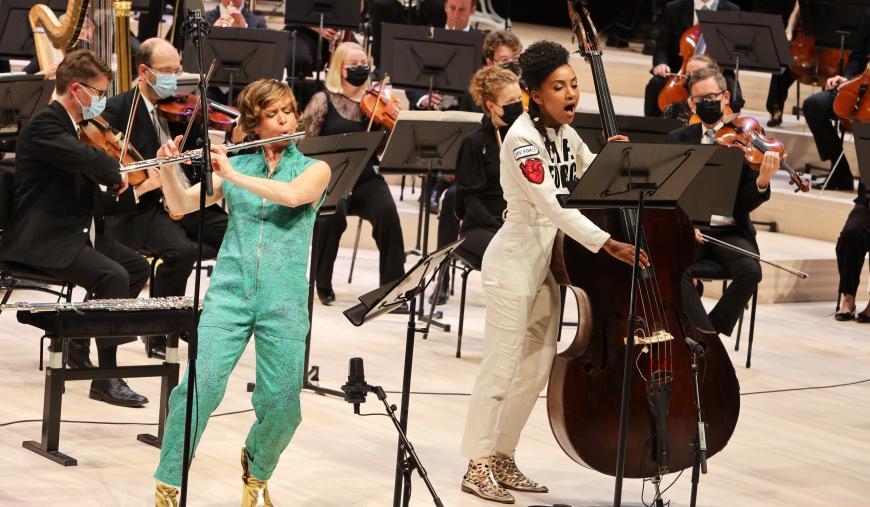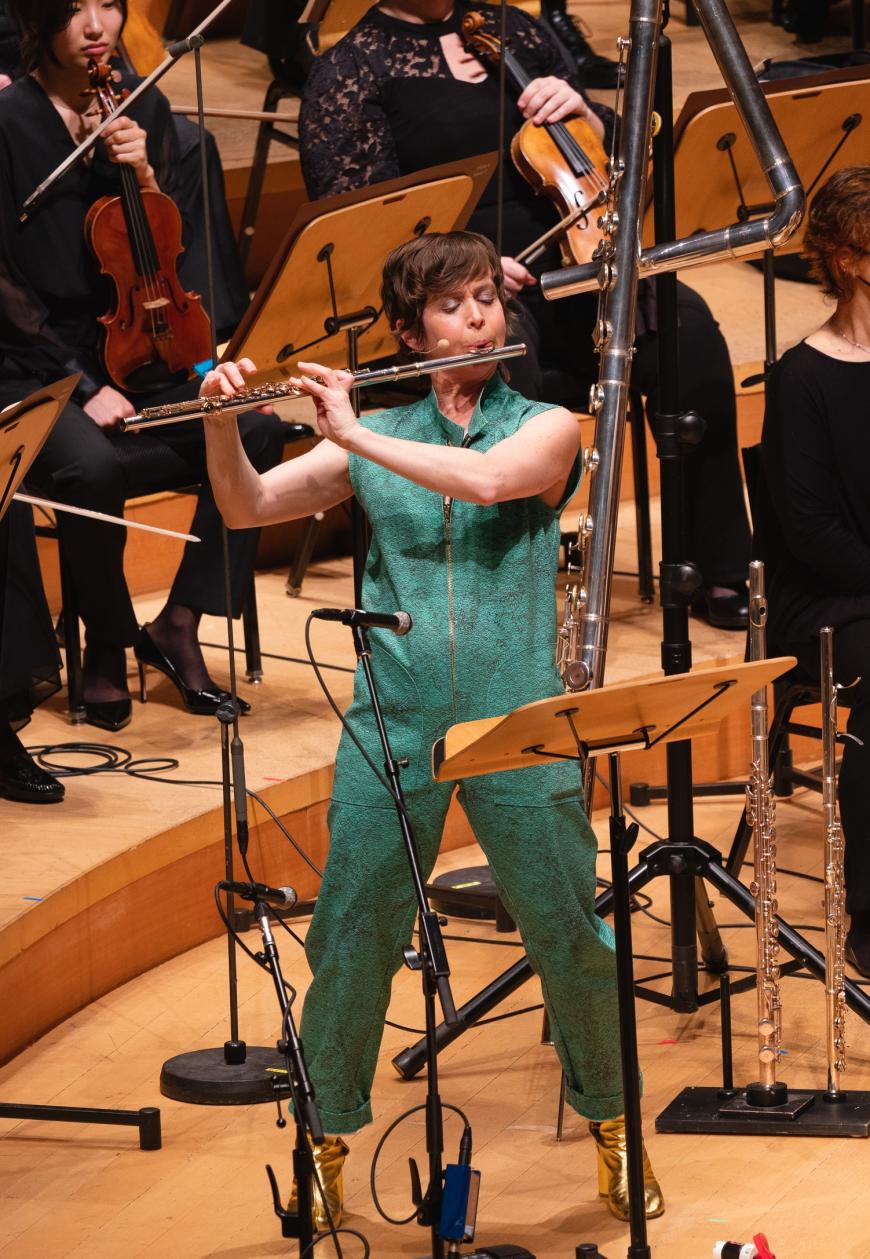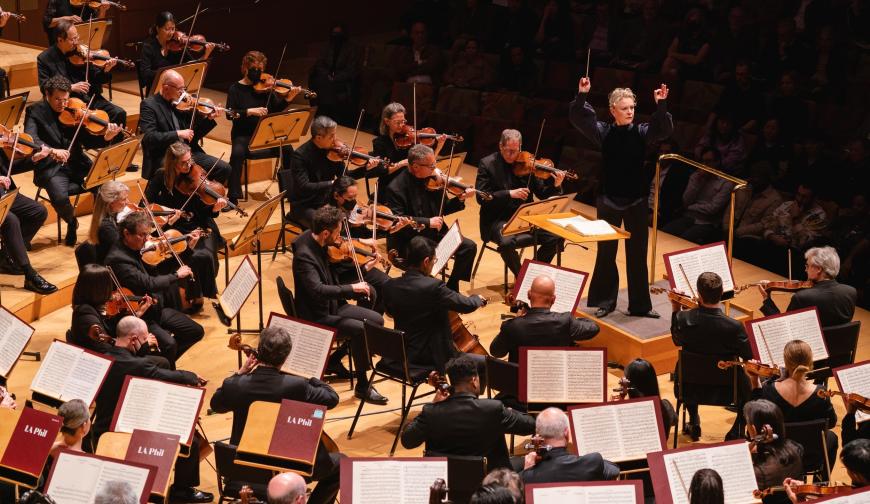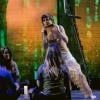
Susanna Mälkki’s current bio says that she was the Los Angeles Philharmonic’s principal guest conductor “from 2017 until 2022,” although on the LA Phil roster elsewhere in the printed program, she is still listed as holding that position. Whatever her status, she is always a welcome guest at Walt Disney Concert Hall, and she will be back next season for a single program.
In the meantime, Mälkki’s sole program for 2022–2023 on Thursday night, March 23 was a pairing of two fairly large servings of music — one new, the other old. The new one, the U.S. premiere of Brazilian American composer Felipe Lara’s Double Concerto, was supposed to have been done here in April 2020, but the pandemic shutdown caused the nearly three-year-long delay. The other one, Antonín Dvořák’s marvelously tuneful and invigorating Slavonic Dances, Op. 46, was like a visit from an old friend whom we may have never really known.
At the preconcert talk, Lara tried to distance himself from the image of a “fruit-on-head” Brazilian. But he needn’t have worried because that stereotype is about 80 years out of date anyway, and this cosmopolitan, avant-garde, single-movement Double Concerto has no audible musical connection with that stock image or any other popular Brazilian music styles.

The Double Concerto was written specifically for the talents and mindsets of two musicians — flutist Claire Chase, from the avant-garde classical scene, and double bassist/vocalist Esperanza Spalding, from jazz and a steadily growing number of other idioms. (Both are currently collaborative partners with Esa-Pekka Salonen and the San Francisco Symphony.) They are given considerable leeway for improvisation, whether merely embellishing a tone, reacting to each other over a drone, or, in their final duo cadenza, flying off on their own. Both are electronically amplified in whatever they do.
At first, underscored by sliding pitches from the orchestra, Chase does more or less the same on flute while Spalding sings wordless vocalises, taking up the bass somewhat later in the game. Supposedly there are words in Portuguese taken from one of Lara’s diaries, but they could not be made out, nor were supertitles provided. The tempos hardly change, only the textures and the growing intensity of Chase and Spalding’s exchanges, and the brass players occasionally make wind-like noises breathing into their horns. There is a very long duo cadenza in the second half of the work in which Chase huffs and puffs on a contrabass flute — a large, angular piece of plumbing that has become a fixture in her performances. The orchestra eventually returns accompanied by a jazz groove on cymbals and brushes, at one point detuning into quarter tones. Chase switches instruments again, this time to the mellower alto flute, and the whole thing ends with a whomp.
Lara has Chase and Spalding meeting in a stylistic place where there is essential unity between classical and jazz extended techniques. Due to the improvisational element, no two performances will be exactly alike — this one clocked in at about 28 minutes — and one can barely guess what a future performance will sound like with soloists other than the two for whom the concerto was written. Sort of like hearing music by Duke Ellington without the Ellington band or Dave Brubeck without Brubeck on piano.

For all of its popularity on recordings, we hardly ever hear an entire set of the Slavonic Dances, whether Ops. 46 or 72, in concert. Usually the dances are doled out one or two at a time, and then only as encores by touring orchestras strutting their stuff. I don’t know why they aren’t done more often as a set, and Mälkki seemingly couldn’t wait to leap right into them.
Not only that, she took great care in actually interpreting the eight little masterworks in Op. 46, not merely ramming them through. The little hesitations of phrase and controlled slowing of tempos felt organic, not forced or indulgent, and other sections could race along with fire yet always stayed under control and with a sure grip on their ever-changing rhythmic impulses. There was room for applause after every dance, and rightly so; the music practically screams for it.
The postponed 2020 program had Gustav Holst’s The Planets as the counterweight to Lara’s piece, but the Slavonic Dances were a more welcome choice. (This is not a knock on The Planets; it’s just that we hear it very often indoors and outdoors.) And the LA Phil, aside from some early sonic congestion, knocked them out of the park.




